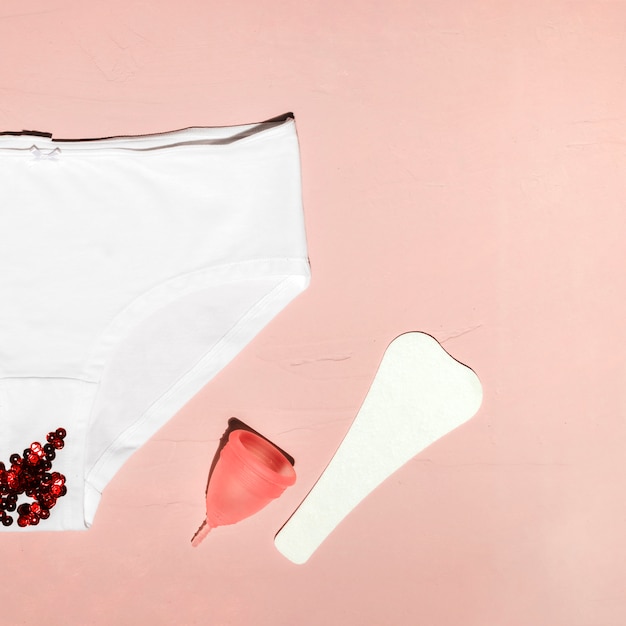
Spotting or light bleeding is typically considered part of your period if it occurs during your regular cycle. However, there are times when spotting happens in the days leading up to your period. This can occur for a variety of reasons. While it may occasionally be normal and harmless, it could also signal underlying health issues that require attention.
### How Long Does Spotting Last?
Spotting between menstrual cycles can last for two or three days, but in some cases, it may persist longer depending on the cause. If this continues for three to four consecutive months, it’s usually a sign of an abnormal health condition. Potential causes may include cervical cancer, thyroid issues, or other serious medical concerns.
### Common Causes of Spotting Before a Period
#### **1. Implantation Bleeding**
Implantation is an early stage of pregnancy when a fertilized egg attaches to the uterine lining. During this process, you may notice slight spotting a few days to a week before your period. Implantation bleeding is usually light pink in color and lasts a few hours to two days. Unlike a regular period, it has a thinner consistency and doesn’t involve clotting. If the bleeding is heavier or lasts longer, it’s likely not due to implantation. This type of spotting often occurs 10 to 14 days after conception and may include mild cramping, though not as intense as period cramps.
#### **2. Birth Control Methods**
Certain birth control methods, like contraceptive pills or IUDs, can cause spotting before your period. This happens because hormonal contraceptives can disrupt your body’s hormonal balance. Spotting is more common in the initial months after starting birth control or if you’ve recently missed a dose. Emergency contraceptives, often used after unprotected sex, can also result in spotting. Over time, your body adjusts, and the spotting usually disappears.
#### **3. Stress**
Excessive stress can have a significant impact on your hormones, leading to spotting before your period. Stress causes the release of cortisol, which affects levels of estrogen and progesterone, disrupting your menstrual cycle. This may result in spotting, late periods, or periods that come earlier than usual. Adopting stress-relief activities, such as exercising, jogging, or playing sports, can help regulate your cycle and reduce spotting.
#### **4. Early Phase of Menstruation**
For young girls who are just starting to experience periods, spotting before their cycle is common. During adolescence, the body takes time to adjust to hormonal changes. Irregular periods, spotting, or uneven blood flow in the early stages of menstruation are normal. This phase is temporary, and over time, the body regulates itself to produce regular five-day periods without spotting.
#### **5. Ovulation**
Spotting during ovulation, which occurs roughly 10-15 days before your period, is fairly common. Ovulation is when an egg is released, signaling a prime time for conception. Hormonal changes during this phase can sometimes cause light spotting accompanied by mild cramps, typically on one side of the body. The spotting is usually pink, brown, or light red in color and is not a cause for concern.
#### **6. Thyroid Problems**
Thyroid issues can lead to spotting before your period. This condition may cause other symptoms, such as sudden weight changes, irregular heart rates, dry skin, brittle nails, hair loss, constipation, and swelling in the neck area. If you’re experiencing these symptoms along with spotting, it’s important to consult a doctor for a proper diagnosis and treatment.
#### **7. Infections**
Vaginal infections may also result in spotting before your period. These infections can range from bacterial vaginosis to sexually transmitted infections like chlamydia or gonorrhea. Some symptoms may include unusual vaginal discharge, foul odors, pain during urination, or bleeding between periods. Untreated infections can lead to more serious health issues, such as infertility. If you suspect an infection, seek medical attention immediately.
#### **8. Accidents or Injuries**
Physical injuries to the reproductive system, such as trauma to the cervix during sexual activity or accidents, may cause spotting. The cervix is a sensitive area, and any damage can lead to light bleeding, which may turn brown as it heals. If you experience spotting due to an injury, it’s important to get medical evaluation to prevent complications.
#### **9. Fibroids**
Uterine fibroids are small, non-cancerous growths that can disrupt normal blood flow during menstruation and cause spotting. While some women may not realize they have fibroids, others experience pronounced symptoms like pain during urination, irregular bleeding, or heavy periods. Doctors often recommend medication to manage fibroids, but in serious cases, surgery might be necessary.
#### **10. Cervical Cancer**
Cervical cancer is a serious condition that can cause spotting before your period. It occurs due to infections or abnormalities in the cervix or endometrium. If you notice unusual spotting, particularly if accompanied by other symptoms like pelvic pain or abnormal discharge, it’s critical to see a gynecologist. Early detection through a physical examination, biopsy, or ultrasound can greatly improve outcomes.
### When to See a Doctor
If you notice any of the following signs along with spotting, it’s time to see a doctor:
– Bleeding after sex.
– Unusual bleeding even after menopause.
– Spotting that persists for more than three months.
– Spotting lasting for more than three days at a time.
– Bleeding that occurs more frequently than every three weeks.
– Any abnormal or unexplained bleeding.
Spotting before your period should never be ignored, especially if it becomes frequent or is accompanied by other unusual symptoms. A gynecologist can conduct the necessary tests to determine whether the cause is benign or requires medical attention. Early intervention can prevent more serious health conditions and provide peace of mind.